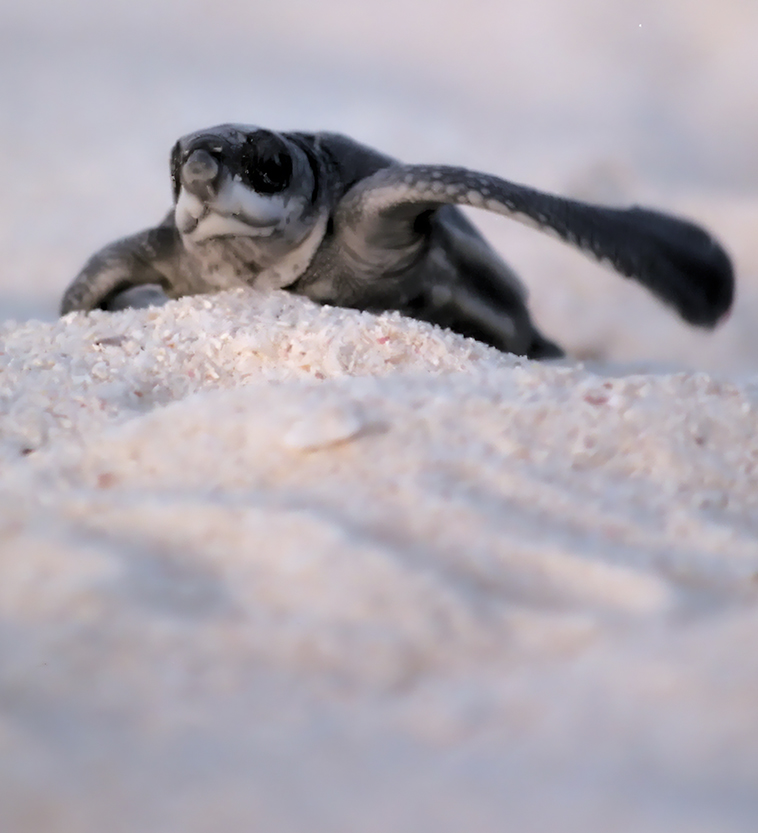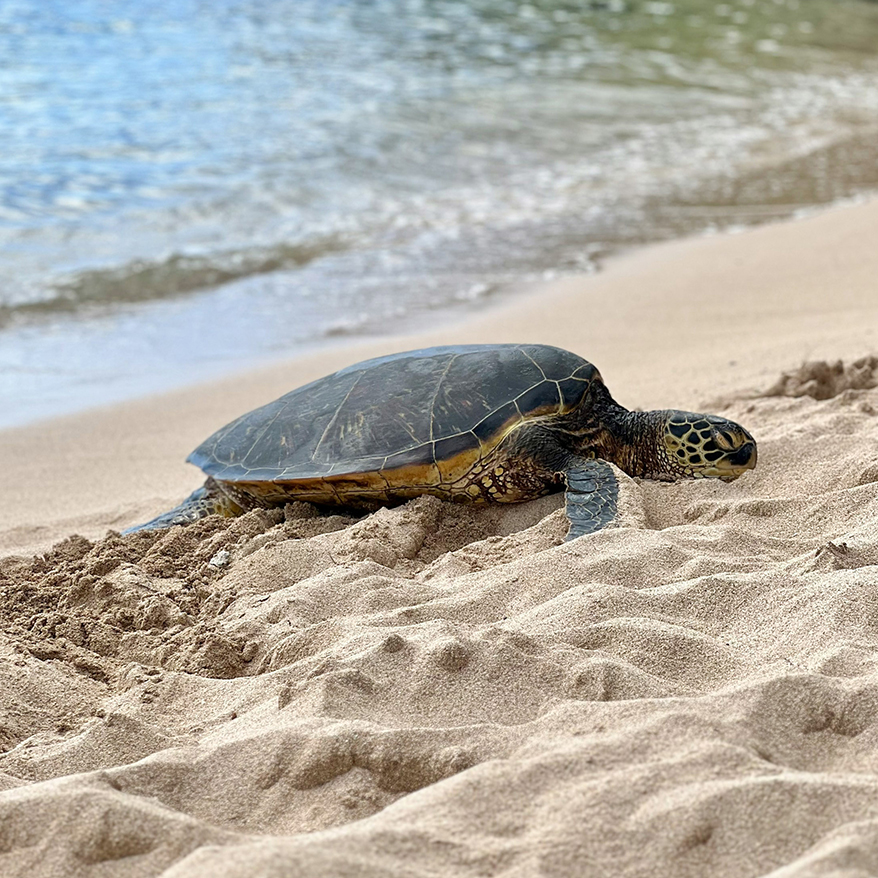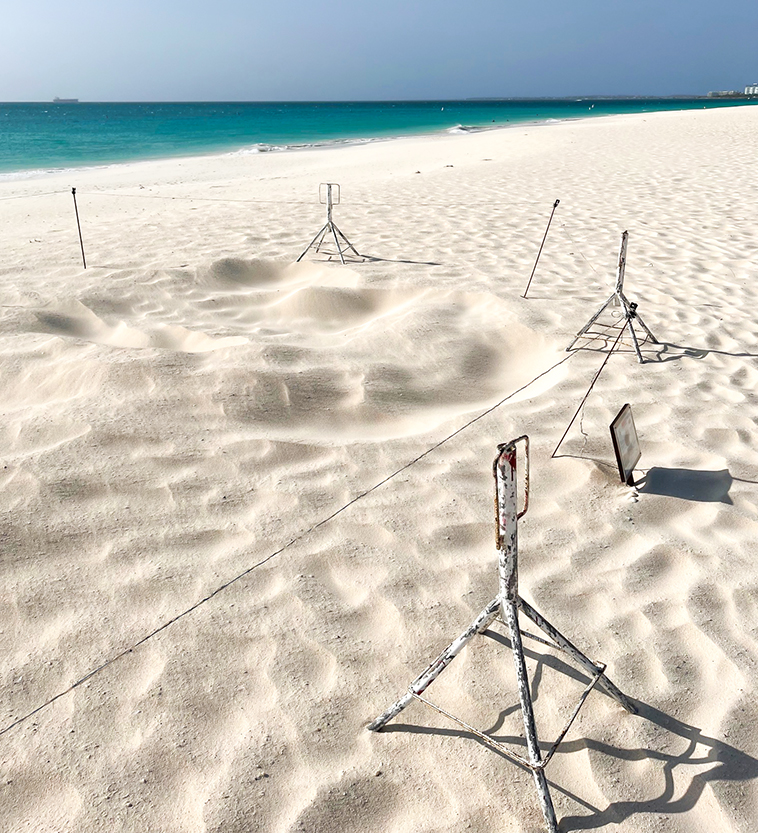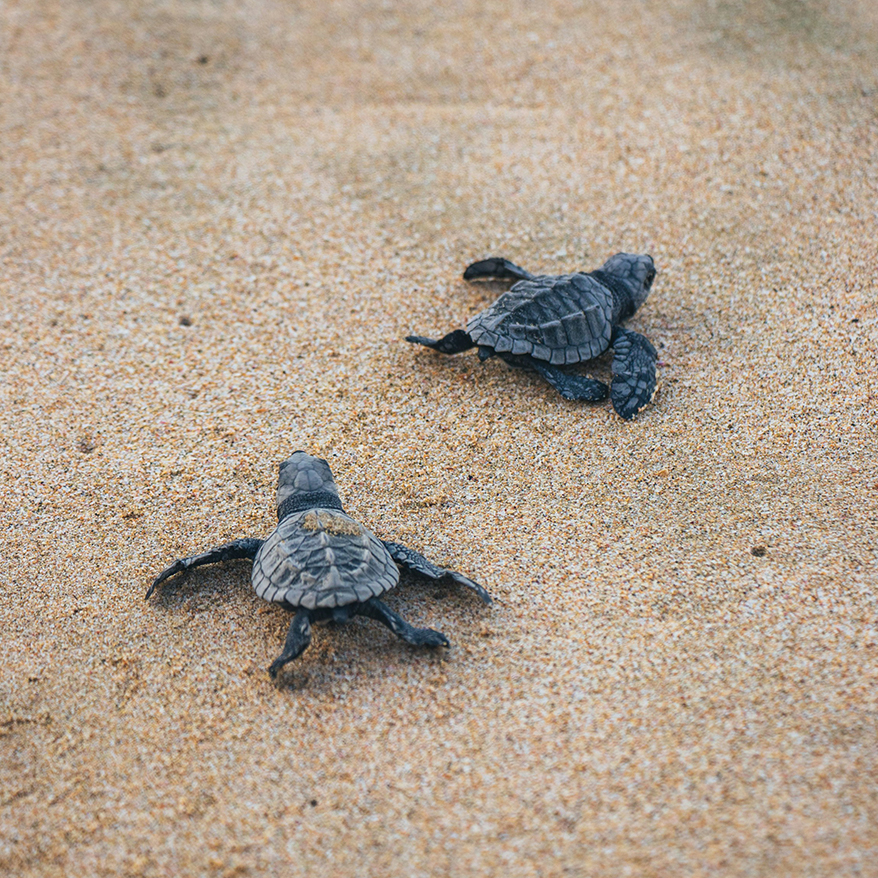Every year, endangered sea turtles return to Eagle Beach — right in front of Bucuti & Tara — to nest and bring new life to Aruba’s shores. In partnership with Turtugaruba, our team helps safeguard nesting sites, guide guests in respectful observation, and ensure these ancient travelers can continue their life cycle safely for generations to come.

Turtle Nesting
NESTING SEASON, MARCH - NOVEMBER
Protecting Aruba’s Sea Turtles

Be Part of the Turtle Watch
Guests staying with us can join our Turtle Watch list, receiving real-time notifications when hatching occurs on Eagle Beach. You can choose to be alerted 24 hours a day or only between 7 a.m. and midnight — ensuring you never miss the magic while respecting your rest. When hatchlings emerge, our team will call to invite you to quietly witness one of nature’s most heartwarming moments.

Turtle Nesting Season in Aruba
Aruba’s turtle nesting season typically runs from March through November, when Leatherback, Hawksbill, Green, and Loggerhead turtles visit our beaches to lay their eggs.
Our Turtle Nesting Calendar tracks these events so guests can follow the season’s progress and understand how we help protect each nest.
The 2025 nesting season has come to an end. The updated calendar will be published at the start of the 2026 season.

Protecting with Care and Respect
Our sustainability team works closely with Turtugaruba to identify, mark, and monitor turtle nests on Eagle Beach. We create protective perimeters around nesting areas, guide guests on responsible observation, and provide education on how to reduce light pollution and beach disturbance. Every nest we help protect brings Aruba closer to a thriving marine ecosystem.

Together for Sea Turtle Conservation
Your stay at Bucuti & Tara directly supports local conservation and educational programs that safeguard Aruba’s sea turtles and their habitats. To learn more or support ongoing efforts, visit our Sustainability Concierge or explore Turtugaruba’s website.